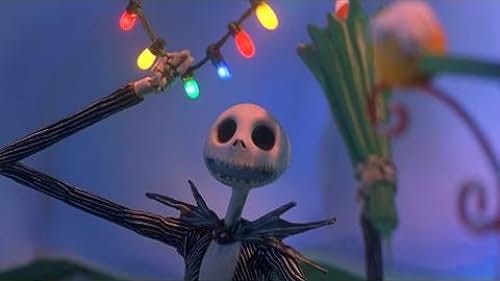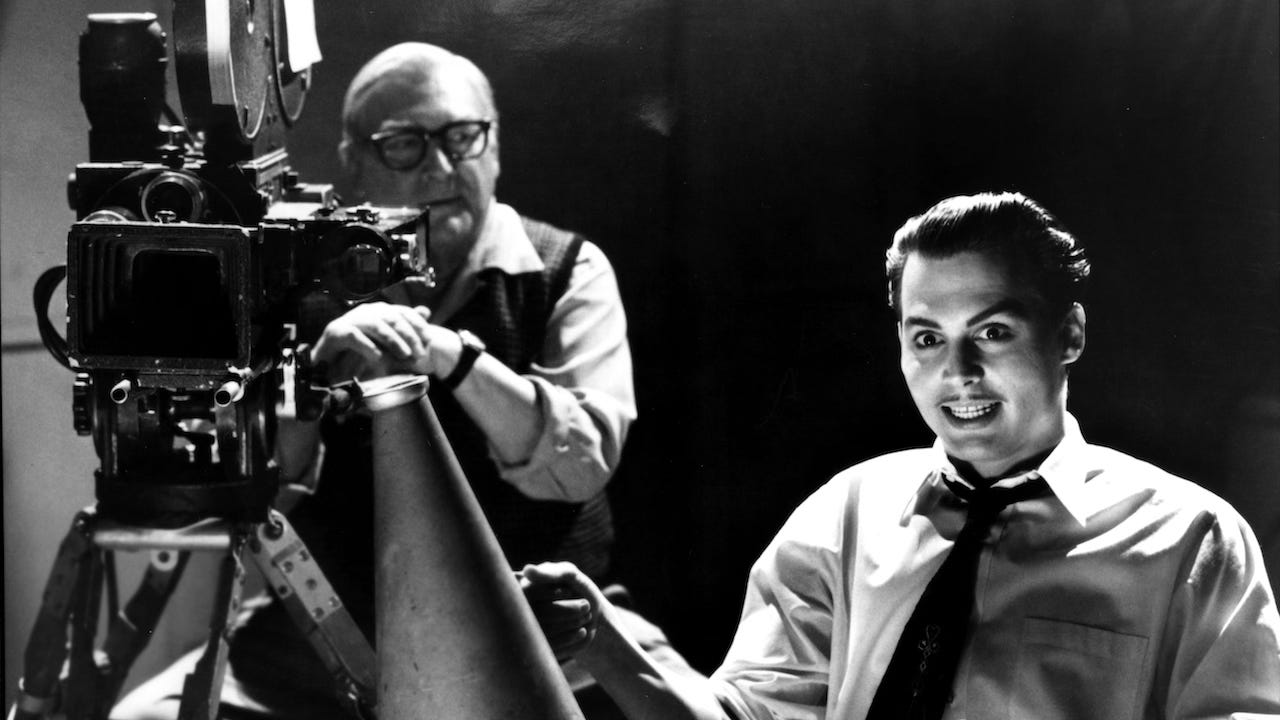THIS IS IT. AFTER THIS, HIS MOVIES STARTED TO LOSE THEIR MAGIC.
By 1993, Burton’s work had received a lot of exposure, his style was instantly recognizable, and he had enjoyed tremendous success. Was the world ready to receive his cherished brainchild, The Nightmare Before Christmas?
To be clear: Tim Burton was the movie’s creator/producer. Henry Selick, that master of stop-motion animation, was the actual director. People familiar with Selick’s other work will recognize Nightmare as one of his films.
Yet Nightmare is steeped in Burton’s visual style and pet themes, which were so recognizable in 1993 that Disney could sell the movie under a burgeoning Burton brand. Disney cynically packaged and sold Burton’s weirdly personal creative vision, but there is nothing cynical about the movie itself.
It’s a gem, a dark but warmhearted Christmas perennial for people who get depressed at Christmastime.
It’s about a skeleton who orchestrates Halloween, year after year. Sick of developing new ways to scare people, he has Santa kidnapped, and hijacks Christmas.
The children of the world are frightened by his strange interpretation of the holiday, yet by going out on a limb, he revitalizes himself and works out his issues.
The Nightmare Before Christmas is a one-of-a-kind artistic achievement, even when watched in the context of the early Burton films I’ve been discussing. Is it meant for children? I think most modern kids will enjoy it. It’s creepy, and revolves around manic depression, but overflows with a sense of wonder.
The golden age of Tim Burton was about to come to an end, but first he made the sweetly demented Ed Wood.
In real life, Edward D. Wood, Jr. was the worst director who ever lived, but Burton’s loving biopic/tribute paints a portrait of a man who found joy, and a sense of self-definition, through his work. His movies were beyond catastrophic, but without them he would have lived an empty life.
Wood’s transvestism is not the movie’s focus, but it is the focus of the best scene in the movie. When Wood decides to tell his future wife about his secret, on their first date, she simply accepts it, without reservations or speeches. This scene sums up what appears to be the central philosophy of Burton’s oeuvre: We are who we are. Let’s get to know each other, so that we can accept each other, so that we can be free to live our lives.
Ed Wood is a black-and-white period piece, set in the real world, about a character who doesn’t wallow in self-pity. It’s odd, just like everything else that Burton touches, but it’s also the most mature film he’s ever made.
My formative years would have been quite different without Burton’s early string of classics: Pee-Wee through Ed Wood. Whenever I felt the need, I was able travel to Burton’s universe, to bask in the craziness and sanity.
Now that I’m an adult, looking back on Burton’s golden age, I’m struck by how perfectly his brand of angst connected with my thirteen-year-old self. His early movies are filled with self-absorbed characters who usually fail to grow. For example, the story of Edward Scissorhands is resolved when Edward shuts himself away in a castle. He was never going to integrate with society.
His cause was always hopeless.
Maybe Burton’s well ran dry because there was only so much he could say about his chosen themes. If he didn’t want to branch out—if Ed Wood was a cul-de-sac instead of a new road—he was always doomed to fall into shallow self-parody.
Yet even today, his visuals make his films rewarding. He peaked early, and is riding a memory, but it’s such a good memory that I still look forward to his films.
I’ll never forget the first time I watched Pee-Wee’s Big Adventure. During a nightmare sequence, Pee-Wee’s bike was taken apart by clowns dressed as surgeons.
Pee-Wee looked from clown to clown, trying to escape from their laughter. Mercifully, the surgeon in charge wasn’t wearing any makeup.
Pee-wee looked, and relaxed.
Then the guy yanked off his surgical mask, revealing a mouth that was painted like a clown’s...and Pee-Wee screamed.
It was the greatest evil clown moment ever.
And it still is.



